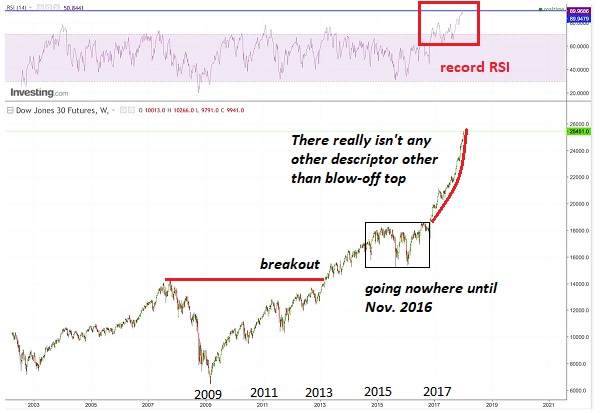April Construction Spending was up a much stronger-than expected 1.8% (strongest since January), led by an 8.7% y-o-y increase in residential construction. This followed stronger-than-expected S&P CoreLogic house price inflation (up 6.79% y-o-y). May Conference Board Consumer Confidence gained 2.4 points to 128, just below February’s 130, the strongest reading going all the way back to November 2000. The Conference Board Present Situation component jumped 4.2 points to 161.7, the high back to March 2001. Also indicative of boom time conditions, Personal Spending jumped 0.6% in April. May auto sales almost across the board surpassed expectations, with sales estimated up 5% from a year ago.
…click on the above link to read the rest of the article…
John Mauldin interviewed Fourth Turning best-selling author and demographics expert, Neil Howe about generational changes and their effect on the markets, during a session at the Strategic Investment Conference 2018. Howe said that demographics and generational factors have a huge impact on equity prices in the long run. Not only that, he thinks that there’s now a generational shift in wealth distribution that could spark major political and economic disruption.
Today’s Demographics Defies Conventional Wisdom
The main example Howe shared is that people in the 75+ age bracket still dominate stock ownership by far. This defies conventional wisdom that people reduce risk as they retire and leave the workforce. Meanwhile, Millennials have lower income and stock ownership levels than previous generations did at the same age.
This is a key change as senior adults once had the highest poverty rates. Younger people are now challenging that once-safe assumption.
Howe also pointed out striking differences between early and late Baby Boomers. Those born in the mid/late 1940s inherited some of the Silent Generation’s wealth and good fortune. Late-stage Boomers born in the early 1960s score lower in all kinds of metrics.
Major Political and Financial Disruption Is Ahead
Neil Howe ended with an update on his Fourth Turning generational theory. He thinks we are about midway through it. From an economic standpoint, he foresees inflation fear and Fed tightening, which will be followed by a painful recession.
Politically, Millennials desperately want civic re-engagement. They are seeking to completely restructure institutions. The right wing is a brick wall on this subject and numbers have let them hold off the pressure so far. This will change as Millennials grow older and Boomers die.
…click on the above link to read the rest of the article…









 As investors’ bullish sentiment moves up to euphoric levels, the markets are reaching extreme leverage. This is terrible news because a lot of people are going to lose one heck of a lot of money. According to CNN Money’s Fear & Greed Index, the market is now at the “extreme greed” level and if we go by Yardeni Research on “Investor Intelligence Bull-Bear Ratio,” it’s also is the highest ratio in 30 years.
As investors’ bullish sentiment moves up to euphoric levels, the markets are reaching extreme leverage. This is terrible news because a lot of people are going to lose one heck of a lot of money. According to CNN Money’s Fear & Greed Index, the market is now at the “extreme greed” level and if we go by Yardeni Research on “Investor Intelligence Bull-Bear Ratio,” it’s also is the highest ratio in 30 years.

